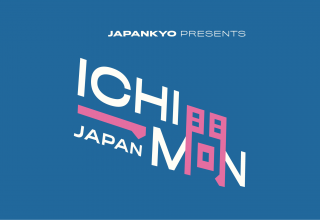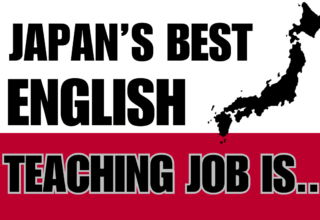
On this episode of Ichimon Japan we ask: Who got it more wrong: MatPat or Tony? (This episode is a follow up to episode 11 of Ichimon Japan which focused on the so-called Curse of the Colonel. The episode was recorded in order to address inaccuracies found in that episode.)
Topics Discussed
- A brief summary of the Curse of the Colonel
- The fact that Hanshin Tigers fans threw the statue of Colonel Sanders into the Dotonbori River after winning the Central League championship in October of 1985 and not after their November, 1985 Japan Series victory
- A recent video from the Food Theorists YouTube channel in which MatPat suggests that the Curse of the Colonel is invalid due to the Hanshin Tigers having won the Japan Series in 1985
- Whether MatPat’s conclusions about the Curse of the Colonel are accurate or not
- When Japanese sources say that the Curse of the Colonel started taking effect on the Hanshin Tigers
- The idea that throwing a statue of Colonel Sanders into Dotonbori River was actually good luck for the Hanshin Tigers
- And much more!
Listen to Ichimon Japan on
Apple Podcasts Google Podcasts Stitcher Spotify iHeartRadio PodBean Tunein RSS
Support on Patreon
If you enjoy Ichimon Japan and want to ensure that we’re able to produce more episodes, then please consider becoming a patron on Patreon.com. You can join for just $1 a month and that comes with perks like early access to episodes, a shout-out at the beginning of a future episode, bonus content, and discounts to Kimito Designs. For $3 a month you get all that plus access to Japanese Plus Alpha, a podcast produced by me (Tony Vega) that focuses on the Japanese language and its many quirks. Whether you are studying Japanese or just enjoy learning about language and linguistics, you’ll enjoy Japanese Plus Alpha.
And it goes without saying that if you sign up, you’ll also get my undying gratitude. Thanks in advance!
Sources, Links, Videos, Etc.
Use the link below to check out episode 11 of Ichimon Japan in which we discuss the Curse of the Colonel in far more detail.
Here is the Food Theory video (from the Food Theorists YouTube channel) in which MatPat discusses the Curse of the Colonel.
If you enjoyed the video above, you may want to check out the Food Theorists YouTube channel.
Here are the Japanese-language sources mentioned in this episode.
- Japanese Wikipedia entry for the Curse of the Colonel
- 2009 TV News Report filmed after the statue of Colonel Sanders was found in the Dotonbori River
- 「呪い」火付け役、救出喜ぶ 探偵!ナイトスクープ
- This article is from the Asahi TV (ABC) website. Asahi is the producer and broadcaster of the Japanese variety show Tantei Naito Sukūpu. This article confirms that the story of the Curse of the Colonel was covered on the show’s first episode in March of 1988. The article also explains that they produced three different episodes that covered the story either in part or from start to finish between the start of the show and March 11 of 2009 (when the article was published). The article adds that the show even had divers go into the Dotonbori River to look for the statue. This was shown on two of the three times they covered the story. Further, the article includes a quote by the producer of the show at the time in which he explains that the Curse of the Colonel’s status as an urban legend (toshi densetsu) was cemented after the show covered the story since their efforts to find the statue were so thorough and yet they were unable to locate it.
- 【都市伝説 2019 最新】カーネルサンダース人形の呪い ケンタッキーおいしいです。
- A Japanese YouTube video explaining the Curse of the Colonel. It describes it as an urban legend (toshi densetsu).
- 【都市伝説】プロ野球:カーネル・サンダースの呪い【東京ダグアウツ】
- This is another Japanese YouTube video that explains the Curse of the Colonel. The person in the video also calls it an urban legend (toshi densetsu).
After the statue of Colonel Sanders was recovered in 2009 it was put on display in 2010 at a KFC near Koshien Stadium (the Hanshin Tigers home stadium) for a time. The video below is a news report from 2010 that discusses the story behind the statue and announces that the statue has been put on display.
To listen to another Ichimon Japan episode about a Japanese curse, check out the link below.
If you would like to check out the Kimito Designs shop, then use the link below. Remember to use the coupon code OPENING10 when you check out to get 10% off (valid until the end of 2020).
Japanese Vocabulary List
Most episodes feature at least one or two interesting Japanese words or phrases. Here’s some of the ones that came up on this episode. All information is from Jim Breen’s WWWJDIC.
- Noroi
- 呪い : 呪い(P); 詛い; 咒い 【のろい】 (n) curse; spell; malediction; (P); : 呪い; 咒い 【まじない】 ; (n) (uk) charm; incantation; spell; curse; 《verb stem》 呪う : 呪う(P); 詛う 【のろう】 ; (v5u,vt) to curse; to put a curse on; to detest intensely; (P); 《verb stem》 呪う 【まじなう】 ; (v5u) (1) (arch) to pray that one avoids disaster or illness; to pray; (v5u) (2) to pray for the death or misfortune of another; to curse; (v5u) (3) to treat illness with prayer
- Yokunen/Yokutoshi
- 翌年 【よくねん(P); よくとし】 (n-t) following year
- Toshi Densetsu
- 都市伝説 【としでんせつ】 (n) urban legend
We Want Your Questions
Is there something about Japan that confuses you? Is there something about Japanese culture that you would like to learn more about? Is there something in Japanese history that you would like us to explain? We’re always looking for new questions about Japan to answer, so if you have one, please send it to ichimon@japankyo.com.
Special Thanks
Opening/Closing Theme: Produced by Apol (YouTube, Twitter, Facebook, Fiverr)
Ichimon Japan cover art: Produced by Erik R.
Follow Japankyo on Social Media
Full Show Notes
What are you funniest Japanese mistakes? | Ichimon Japan 30














